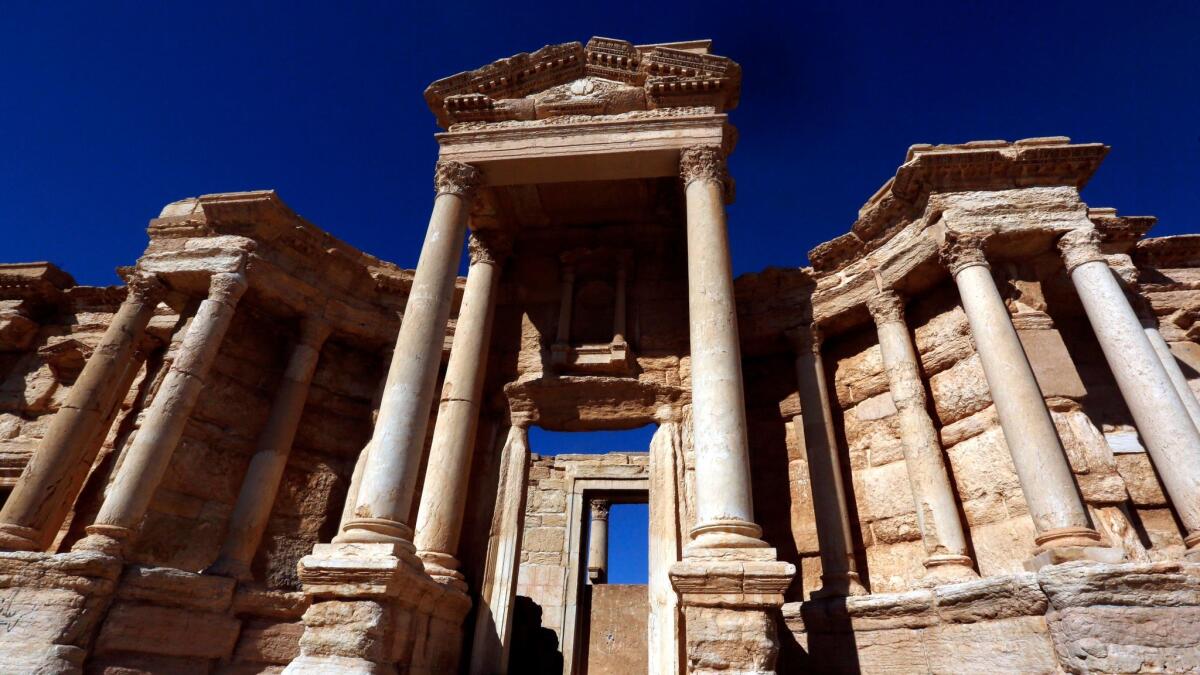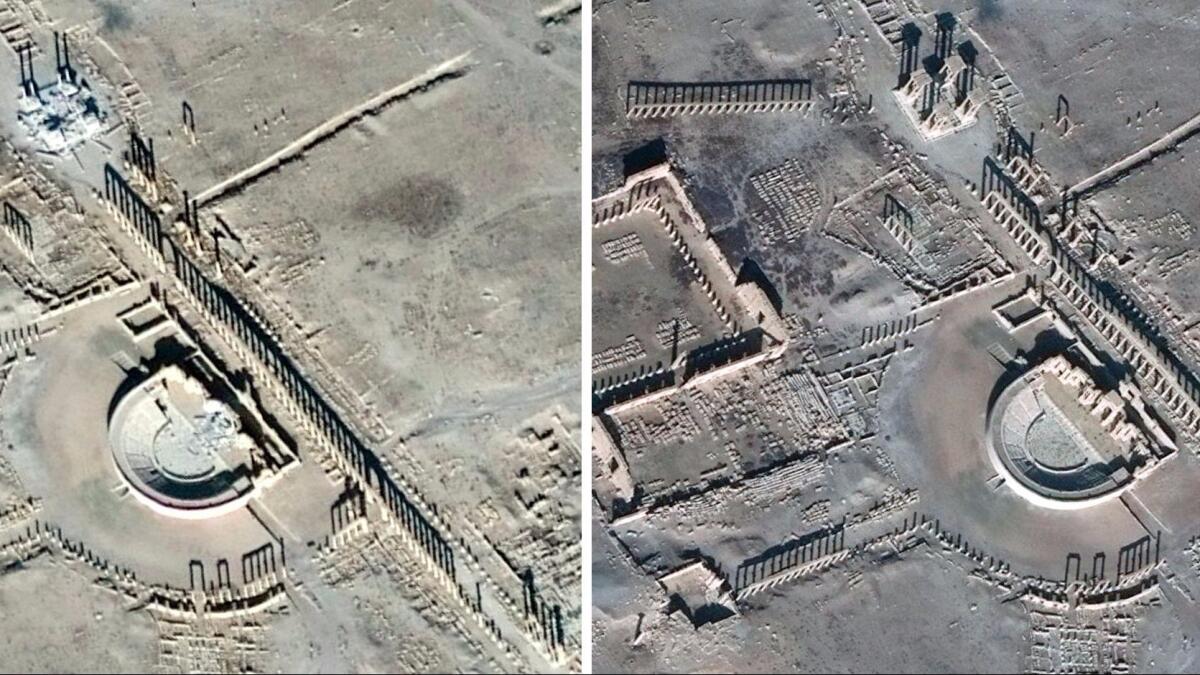Islamic State destroys part of landmark Roman theater in ancient Syrian city of Palmyra

- Share via
Reporting from Amman, Jordan — For centuries, the Roman theater in the historic Syrian town of Palmyra was the main stage for public events there. The current civil war did not change that.
When Islamic State militants captured the town in May 2015, they used the theater to hold a ceremonial beheading of government soldiers.
Ten months later, after government forces took back Palmyra, the Mariinsky Orchestra visited from Russia and filled the theater with the music of Prokofiev.
Then last month the town and its theater, one of the best preserved buildings of its kind, fell back into the hands of the militants.
Now satellite images obtained by the American School of Oriental Research show that the theater has been badly damaged, with significant harm to its facade, the Boston-based nonprofit said Friday. The group, as well as government and opposition activists, said the destruction was part of a campaign by Islamic State to destroy the city’s artifacts.
The militants also inflicted extensive damage on the Tetrapylon, a 16-column structure that was an integral part of Palmyra’s colonnaded streets. The structure appeared to “have been intentionally destroyed using explosives,” the American nonprofit said in a statement.

“Two columns remain standing, but the majority of the structure has been severely damaged and column drums and debris are visible on the ground around the structure,” it reported.
All but one of the pink Egyptian granite columns were modern reproductions erected in 1963, according to the Associated Press.
Islamic State, which espouses an extreme interpretation of Sunni Islam, considers artifacts such as those in Palmyra to be idolatrous.
During their previous 10-month reign over the ancient city, the jihadists blew up graves, the Arch of Triumph as well as the Temple of Bel, an important religious building built in the first half of the 1st century.
In August 2015, after Khaled Assad, an octogenarian archaeologist who dedicated his life to the study of Palmyra, refused to divulge the location of artifacts and treasure supposedly buried in the area, the militants beheaded and crucified him, reports at the time said.
An intense Russian air campaign helped Syrian government forces take back the city in March of 2016. Though Islamic State has recently suffered major losses in the Iraqi city of Mosul and Syrian areas near the Turkish border, the group managed to take back Palmyra in a blitz attack this past December.
The United Nations cultural agency called the latest attack on historic sites a “war crime.”
“The operation is tied to revenge,” Syria’s antiquities chief, Maamoun Abdul Karim, said Friday in an interview conducted over the WhatsApp messaging service.
“The theater and the Tetrapylon have nothing to do with religion,” he wrote. “It is against cultural heritage and the international community.”
Bulos is a special correspondent.
ALSO
U.S. bombers strike Islamic State camps in Libya
Islamic State claims responsibility for Istanbul nightclub attack that killed 39
Netanyahu blames Islamic State inspiration for truck rampage that kills 4 Israeli soldiers
UPDATES:
1:30 p.m.: This article was updated with background on the Syrian civil war and Palmyra’s artifacts.
This article was originally published at 7:10 a.m.
More to Read
Sign up for Essential California
The most important California stories and recommendations in your inbox every morning.
You may occasionally receive promotional content from the Los Angeles Times.











